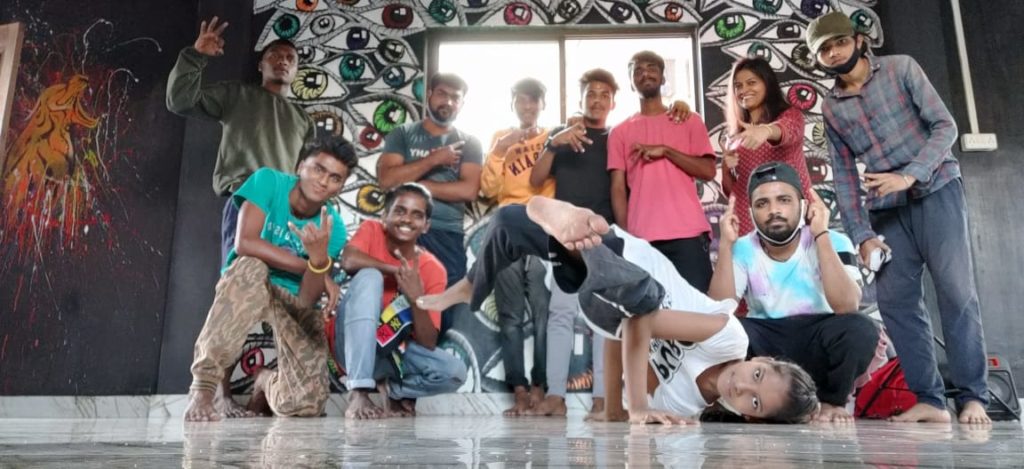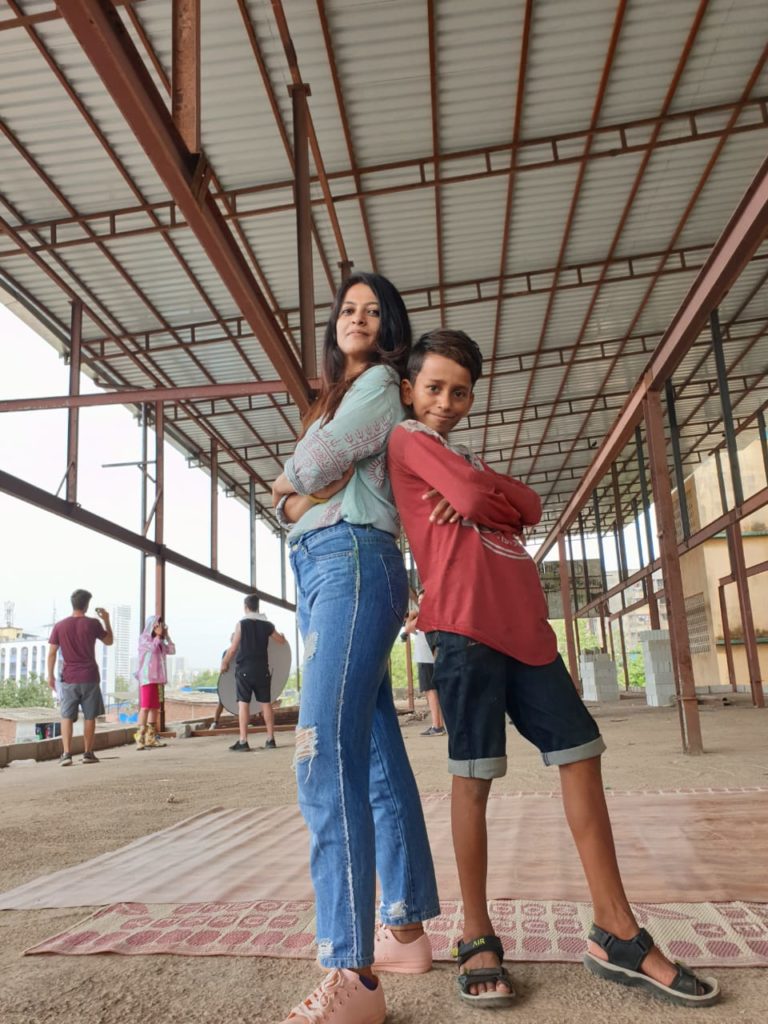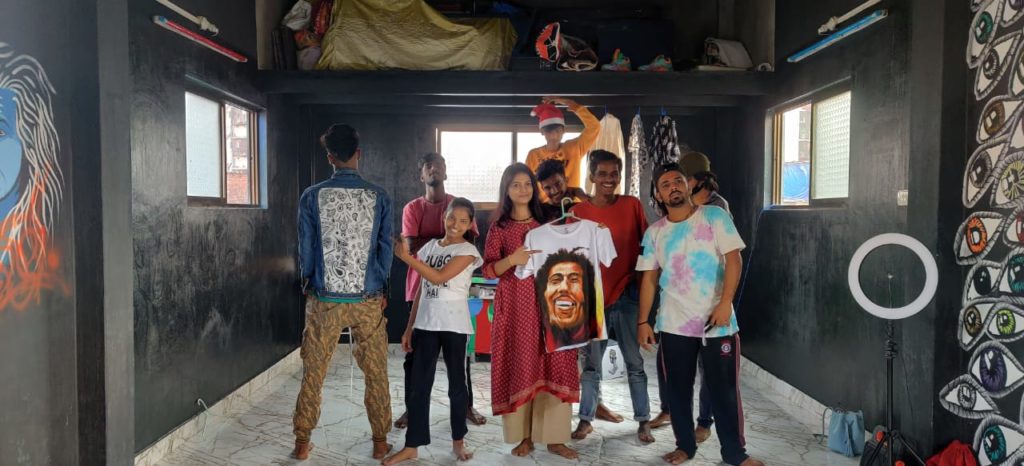In conversation with Dolly Rateshwar, Co-Founder- The Dharavi Project
Tell us about the start of The Dharavi Project
A hip-hop movement since 2014 running in the bylanes of Dharavi (Asia’s 2nd largest Ghetto) for the last 5yrs as one of the very 1st #AfterSchoolofHiphop (completely free fee structure) across the world where domestic violence, influence of alcohol and smoking up is a strong culture ‘distracting’ the under-resourced talent towards the nuances of the society. We have 7 instructors (artists from HipHop community ) who teach sub-elements of Hip-Hop to our emerging talent guiding them, nurturing and helping them get a sense of direction in the life of an artist.
From MC heam (Rap instructor- MTV Hustle contestant) to BBOY Vikram(breaking instructor- started as a student and is now an instructor), D-Cypher(Beatboxer – lead voice in GullyBoy movie), Insane strokes and Gauri (Graffiti & Street ARt), DJ Spindoc and his crew for Deejaying and Abhijay Sharma (Music production instructor). Classes are conducted 6 days a week at our school in Dharavi.

“The seed of this idea “The Dharavi DREAM Project” was sown from the very own vision at Qyuki by Samir Bangara to create and provide a digital platform to the young creators in India to showcase their Talent.
During this time of scouting and meeting raw and young Talent, we came across 2 Hip Hop Crews from Dharavi (a home to a burgeoning Hip Hop culture, completewith Rapping, Beatboxing, Emceeing and Graffitiing with multiple active crew member) and on boarded them in no time.
With their unwavering passion and firm vision to spread the HipHop culture across the globe and, more importantly, educate people through their music and dance form impressed Samir. He introduced me to the initiative and I was the fortunate one to be chosen by him to give shape to this dream together.
Qyuki and Universal Music have a long standing relationship on multiple fronts. When Devraj Sanyal , MD India & South Asia expressed his interest to do something impactful with music, we decided to combine forces and that’s how we all became a part of The Dharavi DREAM Project family.
The project was launched to discover creators from the nook & corners of Asia’s largest slum “Dharavi” and help them leverage their Talent through our digital platform by means of collaboration, mentorship and technology across the world.
What are some of the initiatives you are currently working on?
Covid has definitely turned out to be a blessing in disguise for The Dharavi DREAM Project. The need to run the school despite the lockdown became all the more important for us especially for our talent in dharavi so that they had some ray of hope in their lives. As the world knows Dharavi was the 1st to go under the red containment zone and the communities of Dharavi were looked upon with different eyes from the outsiders. We decided to not stop but fight not only covid battle but also our sustenance together with our talent.
April 1st 2020- we went online. Started with our 100 students online with our in-house instructor MC heam’s guest artist – Naezy coming in as a Guest lecture at our very 1st online schoolofhipHop. MC heam helped us take the school across the country as well as intl. We saw a surge of student applications amounting to approx 1500 numbers enrolling his Rap lectures.

Well, we always wanted to cater to so many under-resourced talent across the globe but we wanted to stabilise our offline/physical school- but truly covid showed us how a challenge could become an opportunity for many. Since then we haven’t stopped .
Despite covide where the world was moving into the new normal – we got client gigs coming to us for virtual conferences where we performed at 2 conferences – (AHAM unconference, Alivelihoods Unconference) with over 100+ attendees from across the globe at respective conferences. 4 track releases from our very own talent during the lockdown
As a woman leading this initiative, what are some of the pros and cons of the same?
First of all, being a woman in a patriarchal society has not been an easy ride for me. People and some artists in Hip-Hop would say that I am not even a Hip-Hop artist so why am I running a Hip-Hop school? Well, if the intent is right to give back to the community, we do not need to be a specific personality/artist to do the needful.
Having said that, it’s been a great ride with tons of everyday learning on the go. People do not take you seriously because you are a woman in music and that too not even an artist. With 100 boys coming to the school and 1 girl student, it felt awkward some days but then I decided that change begins with me. I saw 3 more girls joining the school and slowly steadily parents started becoming more comfortable and felt proud to see me at the school.

To start with, there would be frequent threatening calls as some people were not happy with the fact that a non-resident of Dharavi was trying to do something for the community there, and that too in Hip-Hop. Also, a woman enabler in Hip-Hop is something that is not easily acceptable. The bigger elephant in the room — being a woman enabler from a non-hip-hop background just adds to it .
However, I see this as an opportunity that being a woman and only woman running a School of Hip-Hop in Asia’s largest ghetto is something that i am very fortunate to be doing. It has an advantage of never having been done before. This also meant girl talent who otherwise shy away in a class full of boys are now torch bearers.
This also has given comfort to the parents of girl students/talent to stand with their daughters, sisters and let them walk down the path of their passion , of what they want to do and at our school – they can come and learn in the most safest environment.
How do you support female artists through your project?
Taking into account public misconceptions, the misogynistic mentality prevalent in our society and the extent to which one’s economic status defines their access to the right information, it’s no surprise that even girls who genuinely want to make a difference are held back because “ log kya kahenge”. Dharavi was considered to be an aggressive place, and domestic violence and drug influence is present even today.
So, parents are more protective about their daughters compared to their sons. If you see the layout of ghettos like this, houses are very close to each other so there’s no privacy and whatever is being spoken about in one house is easily audible to the neighbour next door. So girls are informed to keep themselves low. That pressure remains on them.
Association of hip-hop with substance abuse and sex symbols, coupled with the fact that Indians, especially those from lower-income backgrounds, are dismissive of experimenting with music styles that go beyond the mainstream Bollywood has led to a lack of acceptance of girls getting into hip-hop.
Opening up about instances in which girls who were interested in rapping and would come to the school to learn, but were forced to stop because of their families feeling it wasn’t “appropriate” for them, I am attempting to change this at a grassroots level by constantly encouraging the few girls who do show up to keep going and even visiting their families and trying to make them understand the potential of hip-hop. But even this has its own difficulties.
Do follow :
Instagram : https://www.instagram.com/dollyrateshwar/







